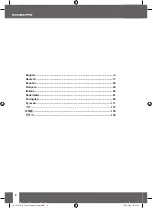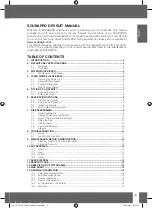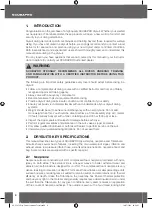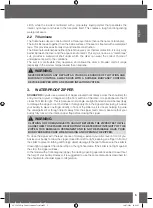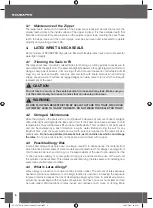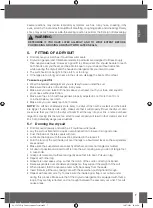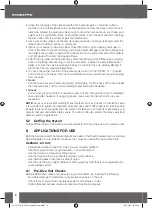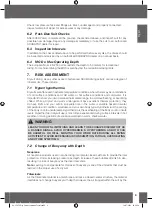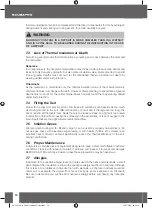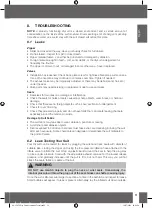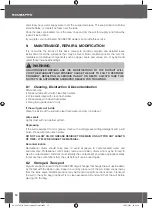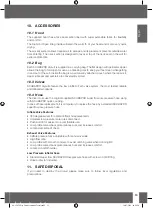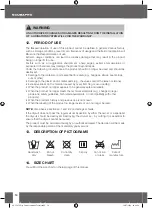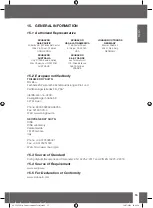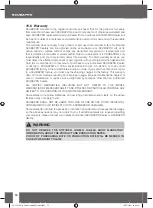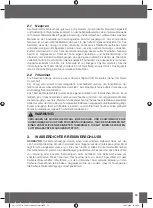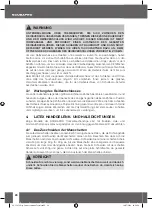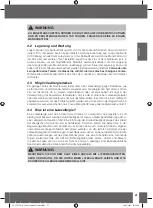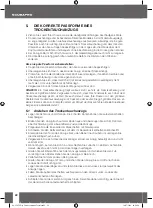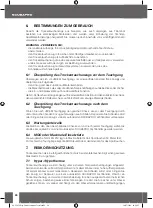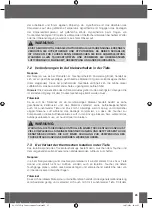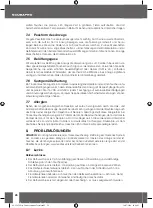
11
English
8. TROUBLESHOOTING
NOTE:
A properly functioning drysuit is a closed environment and a certain amount of
condensation on the inside of the suit is natural. Divers exerting a lot of energy or spending
time above water on a warm day with the suit closed will notice this more.
8.1 Leaks
Zipper
• Slider not closed all the way. Have your buddy check for full closure.
• Zip has failed – inspect for split in closed teeth.
• Zipper material failed – can either be punctured or damaged by abrasion.
• Foreign material caught in teeth – dirt, sand, debris, or the drysuit undergarment is
frequently the trouble.
• The zipper is old, worn out, or damaged in some other way – have it replaced.
Valves
• Installation has loosened. Check back plate screw for tightness. Neoprene suits can see
this, as the neoprene may continue to compress over time. Tighten if needed.
• The exhaust valve may be improperly adjusted, or there may be debris (sand, hair, etc.)
under the seal.
• Valve parts may need servicing or replacement due to use and wear.
Seals
• Seals leak for two reasons, damage or interference.
• Check the seals for holes or tears caused by sharp objects, wear & tear, or chemical
damage.
• Check that there are no foreign objects such as hair, sections of undergarment.
• Check for over trimming.
• Check they adjusted properly and do not have folds that can create leaking channels,
especially around the tendons in wrists.
Damage to Suit Fabric
• The suit fabric may leak due to wear, abrasion, puncture or tearing.
• Avoid sharp and abrasive objects
• Divers exposed to corrosive chemicals must take extra care cleansing & rinsing the suit
after each exposure. Some chemicals can degrade or delaminate the suit materials to
the point of failure.
8.2 Leak Testing Your Suit
Your drysuit can be tested for leaks by plugging the wrist and neck seals with objects of
suitable size, closing the zipper and using the low-pressure inflation hose attached to the
inflate valve to inflate the suit. Wrap an elastic band around the seal to help the plug stay
in place under pressure. Start with the adjustable exhaust valve set at the lowest release
pressure, and gradually increase until the suit is firm, but not hard. This way you will not
stress the seals, fabric or seams of the suit.
!
WARNING
DO NOT use GLASS objects to plug the neck or wrist seals. Occasionally, the
internal pressure will blow the plug out of the seal. Glass can shatter, causing injury.
Once the suit is inflated, submerge it a section at a time in the bathtub, and inspect for leaks.
Small bubbles will appear if a leak is present. Alternately, lay the inflated suit down outside,
00-15656-Dry Suit user manual-totale.indb 11
30/07/2019 09:08:24
Содержание DRYSUIT Neoprene
Страница 170: ...170 NOTE 00 15656 Dry Suit user manual totale indb 170 30 07 2019 09 08 35 ...
Страница 171: ...171 NOTE 00 15656 Dry Suit user manual totale indb 171 30 07 2019 09 08 35 ...
Страница 172: ...P N 45101180 rev F 07 2019 Artbook 15656 19 00 15656 Dry Suit user manual totale indb 172 30 07 2019 09 08 35 ...


